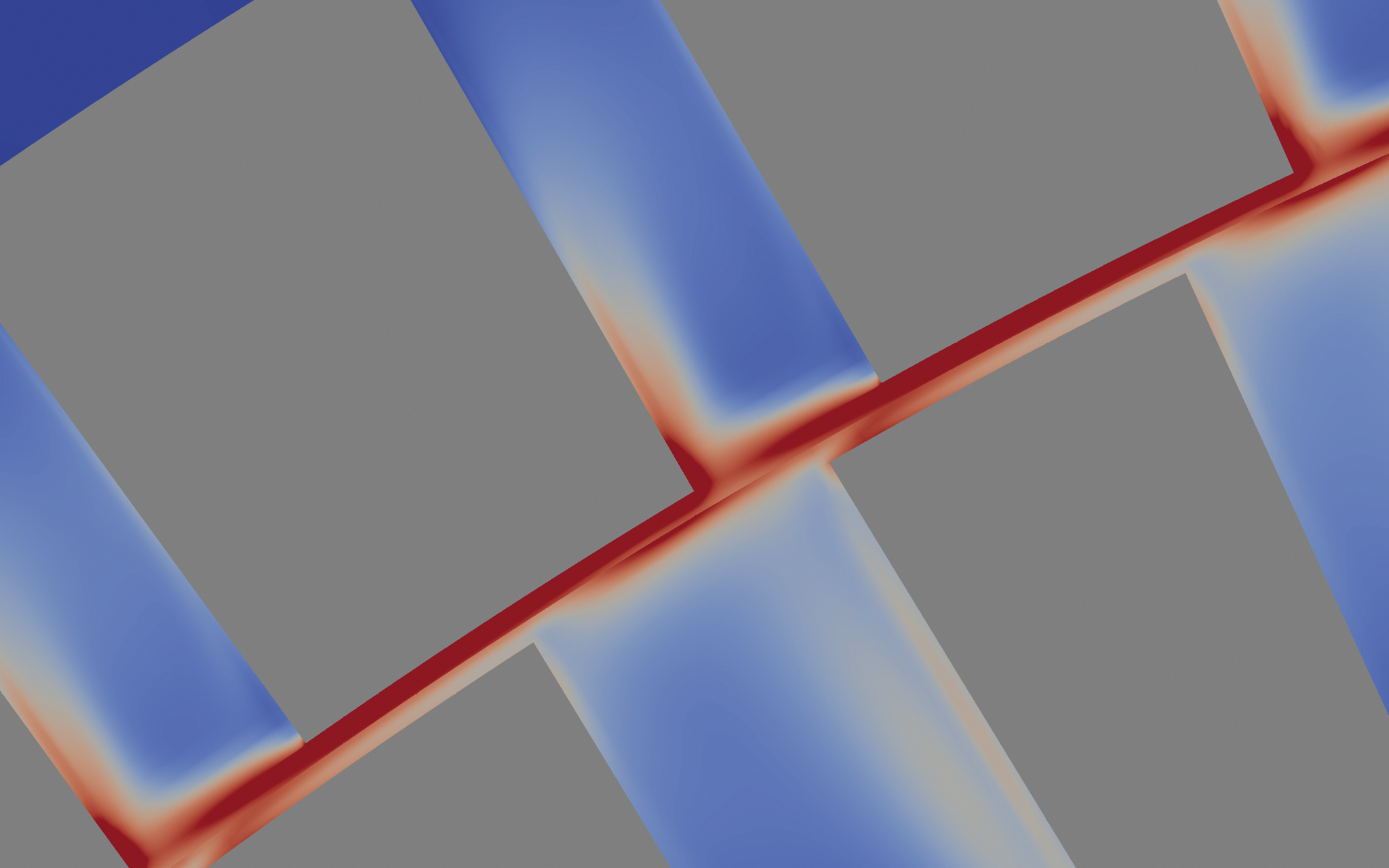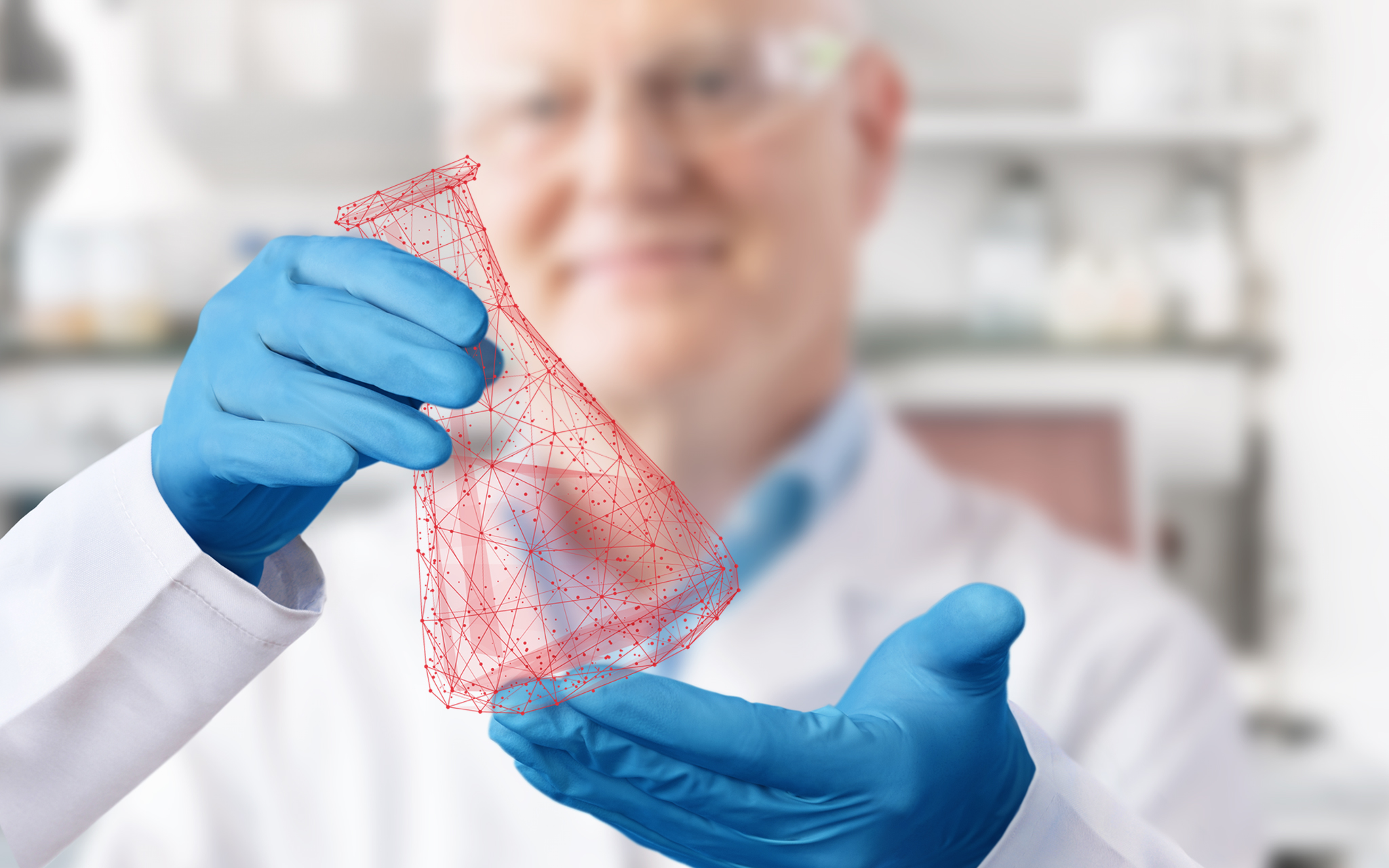Where the naked eye sees smooth surfaces touching, high magnification shows multiple complicated relationships, awareness of which is needed in order to understand the friction process and lubricant performance.
Imagine a vast, mountainous landscape, over which a second, upside-down mountainous landscape is scraping. Here, only the tallest heights come into contact with each other, while large distances dominate elsewhere. Here, peaks remain stuck together, become wedged together and deform, break apart where possible before it continues abruptly. Here, the upper landscape slides a bit higher in order to speed crashing into the depths if mountains and valleys fit together somewhat better.
And so it continues dramatically, when two seemingly smooth objects rub together. Even reflective metal surfaces are strewn with microscopically small rough spots and become a kind of mountainous landscape with sufficiently sharp magnification. Therefore, in roller and plain bearings, gears and other tribological systems, the selective and short-term conditions can be much more extreme than the macroscopic view – with a massive impact on the lubrication.
“In a manner of speaking, the lubricant ‘sees’ the extreme conditions in the rough spots, the high pressures and the changing gaps. And it does not see the contact area and the reaction force that we can see from outside,” explains Dr. Christine Fuchs, Vice President Global Research & Development at FUCHS. Therefore, in order to understand the performance of tribological systems and the lubricants used in them, you need to know these details. “However, it’s practically impossible to recognize them using metrology. This means that we need to calculate them.”

“Our goal is to make lubricant ‘talk’ and draw specific recommendations for action from that. There is a vast amount of added value in this.”
Moving tests to the virtual world
For this reason, there is an important area called “simulation and calculation” in FUCHS’ research and development department. However, using simulation calculations to find out the conditions and wear that a lubricant experiences in a given application is just the first step for experts in this field. If the simulation of mechanical parts succeeds – and existing, highly specialized expert tools make this possible – then it stands to reason that lubricants can also be integrated into the calculation model in order to be able to predict the behavior of the entire system. “In the end, our goal is to make the product development process faster and more efficient by moving at least part of the experiments and tests to the virtual world of simulations,” explains Christine Fuchs.
The perfect simulation is a virtual copy that behaves exactly like the real system. However, in the case of lubricants with the behavior described, this kind of “digital twin” is difficult to achieve, as the head of the simulation and calculation department explains: “In reality, there are always also chemical aspects to add to the mechanical and physical, e.g. surface effects.” As a result, he and his colleagues are already wrestling with the next big challenge – combining chemical and mechanical simulation. If the merger of these two worlds is achieved one day, it will be possible to shorten the development process again.

“With tools such as simulation and sensors, digitalization helps us to quickly develop just the right products for our customers and offer even more comprehensive services.”
Getting the lubricant to “talk”
With the topic of simulation, it is a matter of a digital tool for the lubricant’s path to application, so another focus of research at FUCHS deals with another path for lubricant in application. The key words are sensors and networking. “Digitalization is leading us to the Internet of Things or, to put it simply, in the future everything will ‘speak’ with everything else. This means that we need to ensure that lubricant can join in,” says an engineer who focuses on sensors at inoviga, a FUCHS subsidiary.
Of course, the “talking lubricant” will not formulate words and sentences but rather provide information about its present condition. “Our goal is to continuously recognize relevant status parameters in order to recognize impending problems early on and to be able to address them,” says inoviga Managing Director, Dr. Matthias Marquart. A decline in certain parameters could be the signal to replace part of the lubricant as soon as possible – and an intelligent overall system could even lead the way in this process and, for example, order the required lubricant, temporarily reduce machine performance as a precautionary measure or similar.
The networked lubricant
If lubricants are made to ‘talk’ in the respective application by inline sensors with cloud connection, it could have many advantages. However, the step from pure data to informative analysis or recommended actions remains certainly challenging.
In real time instead of by mail
This would be a major advancement for those responsible for maintenance. At the moment, they generally need to manually draw samples of lubricant at certain intervals, send these for analysis by mail and interpret the lab results a few days later in order to determine whether action is required. In the future, sensors could directly determine the condition of the lubricant in the machine, transfer the performance data online into a central computer, which can assess it in real time. This entire process would need just a few moments.
However, sensor experts at FUCHS still have a number of challenges to solve until then. For example, suitable products are still to be extensively tested in the context of relevant applications. “But the sensor is, for us, mainly just a part of a complex system,” says the inoviga engineer. Development work is still necessary to get from bare test results to relevant added value. According to experts, the biggest challenge is waiting when data arrives in the analysis computer: to draw specific recommended actions from it.

